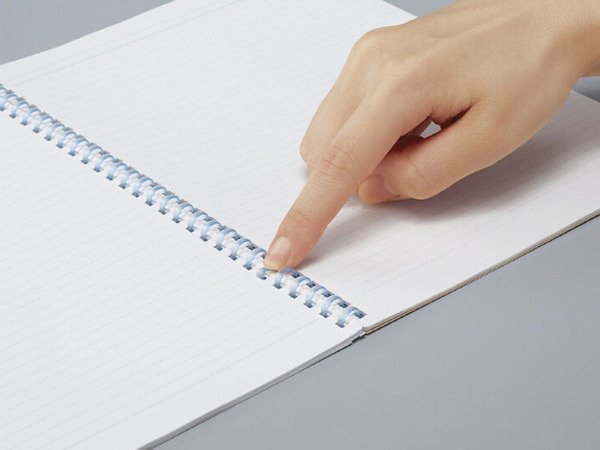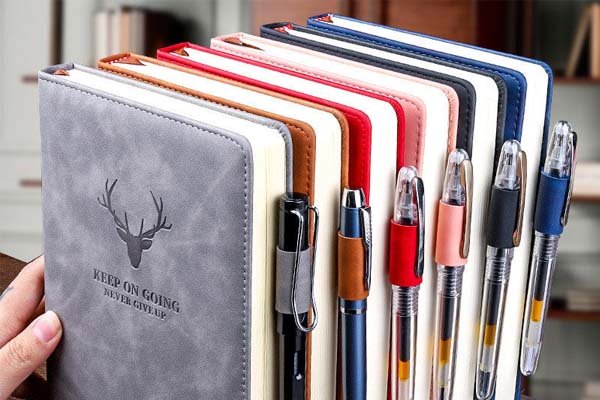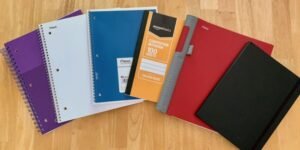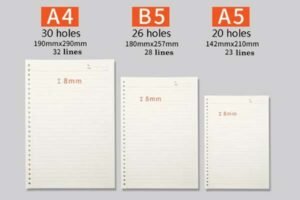
Are you expanding your notebook brand internationally? You might get confused by the different standards in each country. This confusion can make it hard to create products that people actually want to buy.
Yes, notebook page counts vary a lot by country. China prefers thin 30-60 page notebooks for students. The US market likes thick 100-200 page books. Europe often standardizes around 96 pages, and Japan focuses on specialized counts for specific uses.
Understanding these local preferences is a big part of succeeding in a new market. A notebook's page count changes how it feels, how much it costs, and who will buy it. In our 18 years as a manufacturer, we've learned that these details matter. A thin notebook works for a Chinese student with many subjects. A thick journal is better for an American professional who wants one book for everything. Getting this right is crucial for your product design.
This is why our factory is built for flexibility. We can produce a 50-page notebook with reinforced binding for a large school order. Or, we can make a 200-page hardcover journal for a corporate gift. Our eight production lines handle different needs, which is how we serve clients in Europe, North America, and Japan. We focus on making the right product for the right market.
What are the common page counts in China?
Selling notebooks in China? You need to know that page count is very important. It connects directly to the school system and daily routines.
In China, notebooks for students usually have 30 to 60 pages. This low page count keeps them light and cheap. They are made for one subject at a time and are often replaced during the school year.

Why Thin Notebooks Are Popular in Schools
The main reason is the education system. Chinese students study many subjects at once. They carry a different thin notebook for each class. This helps keep their school bags from getting too heavy. Cost is also a very big factor. Schools buy notebooks in huge numbers, so a lower page count makes the unit price cheaper. Our factory in Wenzhou is set up for these kinds of large, cost-focused orders. We can make over 500,000 notebooks a month, and a lot of them go to schools.
Corporate and Retail Notebooks
The corporate world in China is different. For business gifts, notebooks are usually thicker, around 80-100 pages. A thicker notebook feels more valuable and professional. We often receive orders for custom business notebooks. For these, we might use more pages and add special touches like a hot-stamped company logo, which only costs about $0.08 per unit.
Common Chinese Notebook Specifications at a Glance
Here is a table to show the most common types. This can help you understand the market better.
| Use Case | Typical Page Count | Paper Weight | Common Binding |
|---|---|---|---|
| Primary/Secondary School | 30-60 pages | 70-80 gsm | Staple or Sewing |
| University | 60-100 pages | 80 gsm | Glue or Coil |
| Corporate Gift | 80-120 pages | 80-100 gsm | Glue or Binder |
| Personal Journal | 100-160 pages | 100 gsm | Hardcover |
What do customers in the US and Canada prefer?
The market in North America wants notebooks that are big and strong. Customers there expect a single notebook to last for a long time.
In the US and Canada, page counts are much higher. They are usually between 100 and 200 pages. Composition books with 100 sheets (200 pages) and spiral notebooks with 70-150 sheets are very common for school and work.

The "One Notebook Per Semester" Idea
Students in the US and Canada often use just one notebook for an entire class or semester. This means the notebook needs a lot of pages and a strong binding. This is why spiral-bound notebooks and sturdy composition books are so popular. We have experience with this. A tech company in Silicon Valley came to us for a new employee gift box. We made a metal binder with a yearly planner inside. It was designed to last, which fits the American expectation for durable products. This project also helped them cut their buying costs by 32%.
Notebooks for Professionals and Creatives
For work, professionals often use journals with 160 to 240 pages. They want one reliable book for all their notes. Good paper is also important. Many prefer 100 gsm acid-free paper so ink doesn't bleed through. At our factory, we can easily upgrade paper from 80 gsm to 100 gsm for just $0.07 extra per book.
Popular North American Notebook Styles
This table shows what people in the US and Canada typically buy.
| Product Type | Common Sheet Count | Total Pages | Key Features |
|---|---|---|---|
| Composition Book | 100 sheets | 200 pages | Hard cover, sewn binding |
| Spiral Notebook | 70-150 sheets | 140-300 pages | Perforated pages, coil lock |
| Business Journal | 80-120 sheets | 160-240 pages | Hardcover, elastic band |
| Legal Pad | 50 sheets | 50 pages | Top-glued, often yellow paper |
What is the usual page count in Europe?
The European market values both quality and function. Page counts are often standard, but with a strong focus on high-quality materials and smart design.
A common standard in Europe is the 96-page notebook (made from 48 sheets). This size is easy to carry but still has enough room for writing. You can also find notebooks with 120, 192, or 240 pages for people who need more space.

The Importance of Eco-Friendly Standards
European buyers care a lot about the environment. Our client Sarah Müller, a purchasing director in Germany, needs products that meet EU eco-labels. Having an FSC™ certification (our code is C106904) is a huge plus here. It shows that the paper comes from responsible sources. Because of our certification, a German bookstore chain chose us to make a series of botanical notebooks. We used a special bare-spine binding so the book could lay completely flat. This design is very popular in Europe, and their annual order is now over 120,000 books.
A Tradition of Quality
Europe has a long history of making paper and books. This tradition creates a demand for well-made products. The 96-page count is common because it works very well with traditional stitched binding methods. These books are often made by sewing together signatures, or sections of paper. Our quality control system respects this tradition. For example, we test the binding strength to make sure it can handle at least 500 page turns.
Are there unique preferences in the Japanese market?
Japan’s stationery market is known for new ideas and very specific products. In Japan, page count is more than just a number; it is part of a special experience.
The Japanese market is very diverse. Planners for detailed schedules might have over 200 pages. But special notebooks for hobbies like washi tape might only have 40-60 pages with unique paper. There is no single standard.

Specialization Is Everything
Japanese customers buy notebooks for very specific tasks. A student might use a Kokuyo Campus notebook with a certain ruling. A professional might use a Hobonichi Techo planner with ultra-thin Tomoe River paper. We worked with a Japanese brand to make a notebook just for washi tape collectors. The pages had pre-cut dotted lines so they were easy to tear out. This special feature helped it become a top-3 seller on the Rakuten e-commerce site. This shows how important it is to meet these niche needs.
The Goal: Thin and Light
We often get requests for very thin products. For example, our client Yuki Nakamura, a designer, needed a weekly planner that was less than 8mm thick but still had over 200 pages. This is a big challenge. Standard glue binding can't usually make a book that thin with so many pages. This is where our manufacturing skills come in. We use advanced binding methods and special materials, like Japanese paper, to meet these tough requirements. Our ability to adapt to unique requests is what makes us a good partner.
Should exporters customize page counts for different countries?
So, is it worth the time and effort to customize notebooks? Or can you just sell the same product everywhere? Let's look at the facts.
Yes, you absolutely should customize page counts. It is a critical step for selling products around the world. A "one-size-fits-all" notebook usually fails because it does not match the local habits, uses, and cost expectations of customers.

Why Customization Matters
Customizing your product directly affects sales. If you try to sell a thick 200-page notebook to a Chinese elementary school, it will be too expensive and heavy. If you try to sell a thin 40-page notebook to a US college student, they will think it's a bad value. The product must fit the customer's needs. As a manufacturer, we make this easy. We have our own paper processing plant and metal stamping workshop. This control over the entire process lets us offer flexible customization, even for smaller orders. We support sample orders of 100 books and full production from 500 books.
How We Make Customization Easy
We help our clients through every step. First, we ask about your target market and who will use the notebook. Then, we suggest the best page count, paper type, and binding. We can also send you a free physical sample book with over 20 material samples. This way, you can see and feel the options before you place an order. We remove the guesswork and help you create a product that is perfect for your target audience. With our 30-day standard delivery and support for DDP trade terms, we handle the complex parts for you.
Conclusion
In short, understanding regional page counts is not just a detail; it's necessary for global sales. From China's thin notebooks to America's thick ones, customization is the key. We are here to make that process simple for you.





